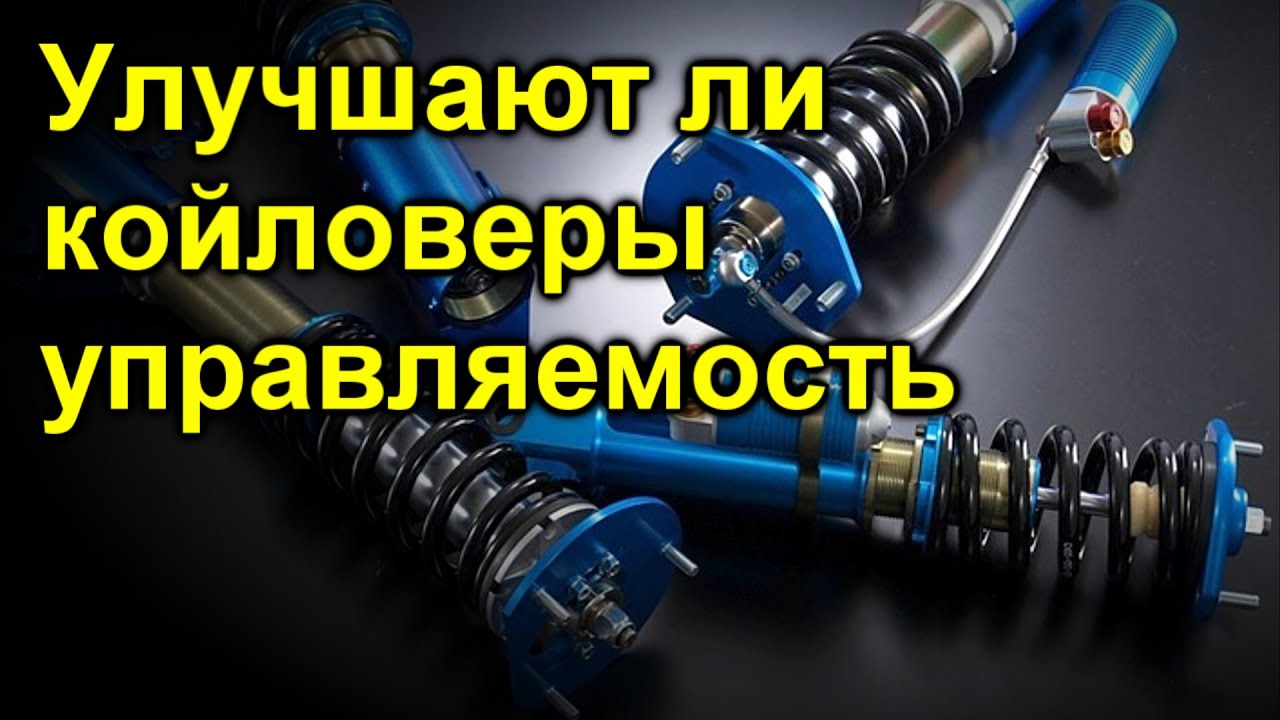
Will coilovers improve my car's handling?
In the aftermarket suspension space, there are spring kits, airbag kits, adjustable dampers and struts, and a host of other approaches to improve handling and/or ride height, but when it comes to improving high-speed handling, the most hushed tones and reverence a look reserved for the coilover. But what are coilover suspension kits, and more importantly, do they improve handling enough to justify their often significant expense?
First, let's deal with the coilover. Most vehicles today use one of several basic suspension designs:
Double control arm (also known by a variety of other names including wishbone or double wishbone)
Stance (sometimes called MacPherson strut)
Multichannel
Torsion
A "coilover" is also sometimes referred to as a coilover shock, a variation on the strut design.
Struts and coil springs
A typical strut suspension uses a coil spring that carries a shock absorber, commonly referred to as a strut (a strut is simply a shock absorber that also carries some or all of the vehicle's weight) and a single control. hand. Typically a coil spring is mounted at the top of the strut, so compressing the spring, the strut, or both allows the wheel to move up towards the car body.
How a coilover works
The coilover setup is similar but uses a longer coil spring with the shock mounted straight down the length of the coil so that the coil is around or "above" the shock. In order for the wheel to move up in the coilover, both the spring and shock must be compressed. The spring carries all the weight, and the damper dampens any vibrations of the spring.
Is it all good? The answer is that it's not necessarily better in theory, but there may be practical benefits. First, another setup might be just as good in terms of performance. For example, if the double wishbone design had been worse, it is unlikely that the famous Porsche 959 and Ferrari F40 would have used it.
But most of us don't drive million-dollar supercars, and most cars aren't designed to handle high speeds at all costs. Thus, in practice, most suspensions, regardless of their design, represent compromises in handling, ride comfort, and cost. In almost any car you drive, it's likely that its handling can be improved in exchange for a harder ride and, of course, some cash. And it's also likely that some customization could be enabled, which isn't usually the case with factory systems.
Benefits of coilovers
Handling and adjustability are big advantages of coilovers. It's hard to change a car's wishbone setup without throwing out everything else in the suspension, but a well-designed coilover setup can allow for a change in handling characteristics without negatively impacting everything else (by a lot). This is why the most performance-oriented suspension kits tend to be coilovers. A good coilover design can improve the handling of almost any vehicle, allowing you to make adjustments to handling characteristics and sometimes even ride height over time.
Note that the last paragraph is about "well-engineered" coilovers. Unfortunately, the installation of some coilovers on some vehicles can harm handling rather than improve it. While the features vary so much that you'll want to do a lot of research, there are two rules of thumb:
More expensive systems tend to perform better than less expensive ones. A high price is no guarantee of improved handling, but low cost units often perform poorly.
If your car already handles well, it will be difficult and probably expensive to improve it.
Installing a coilover can cost several thousand dollars before your mechanic even takes it out of the box, so it's worth doing a lot of homework before installing it. In many cases, coilovers improve the handling of a car.